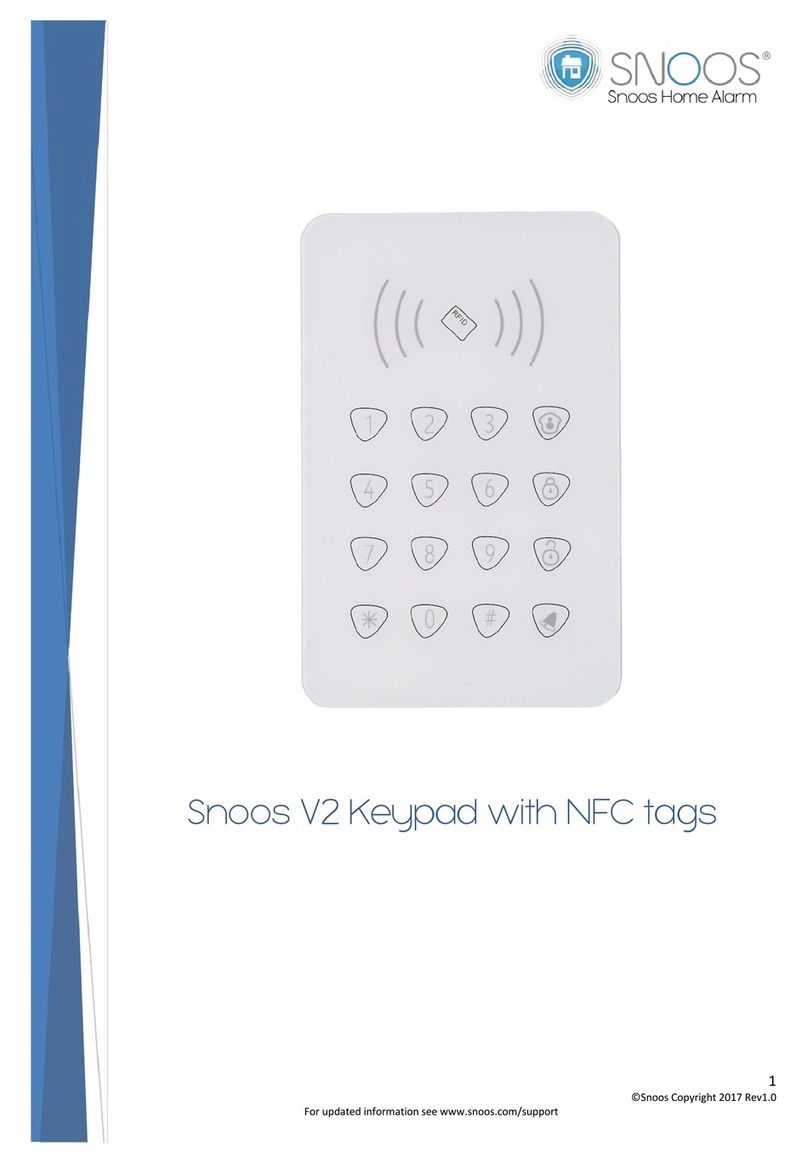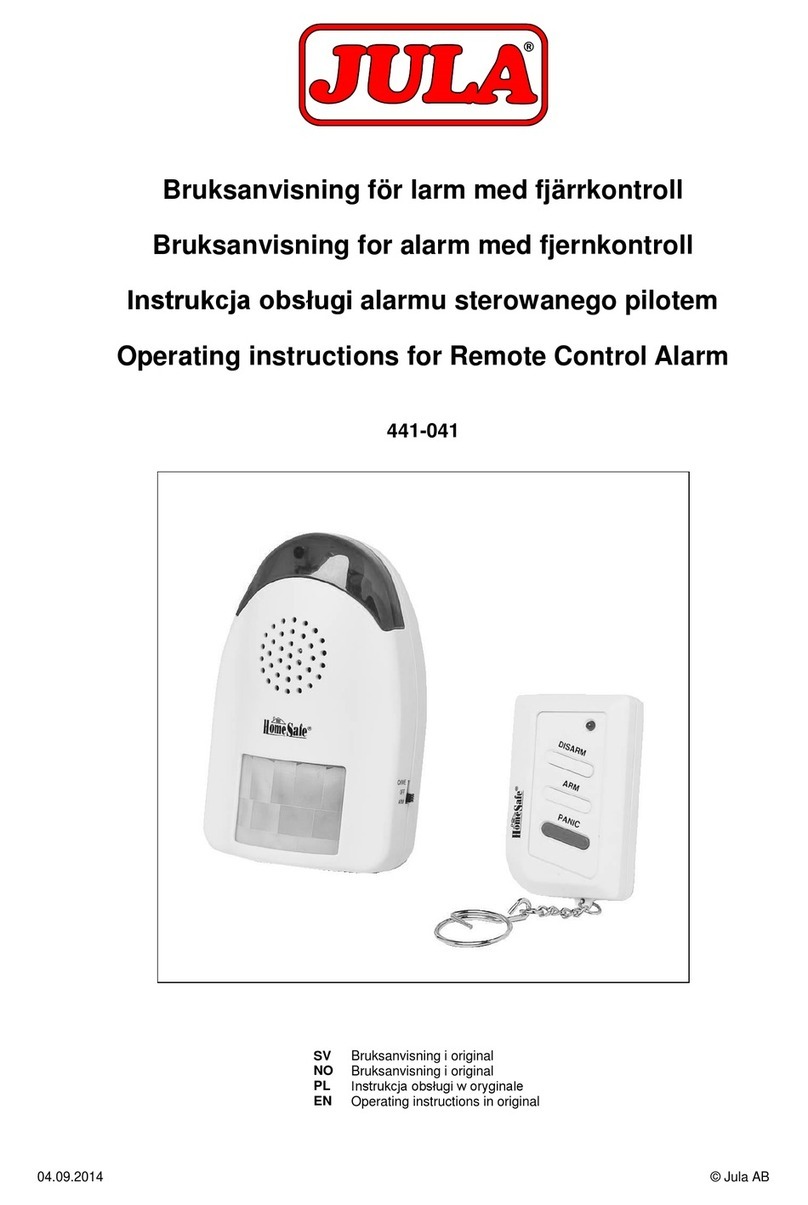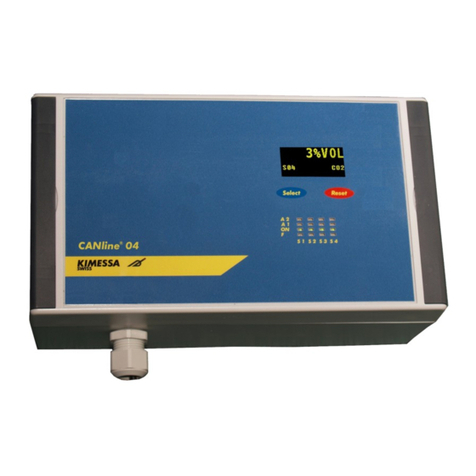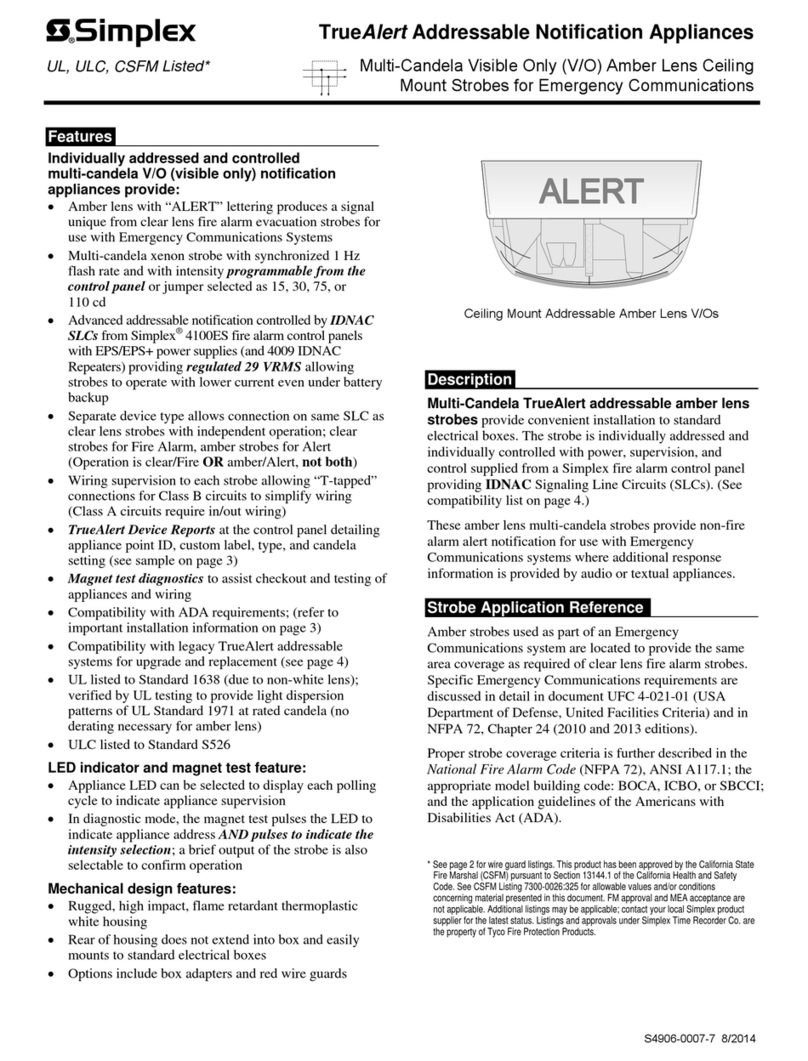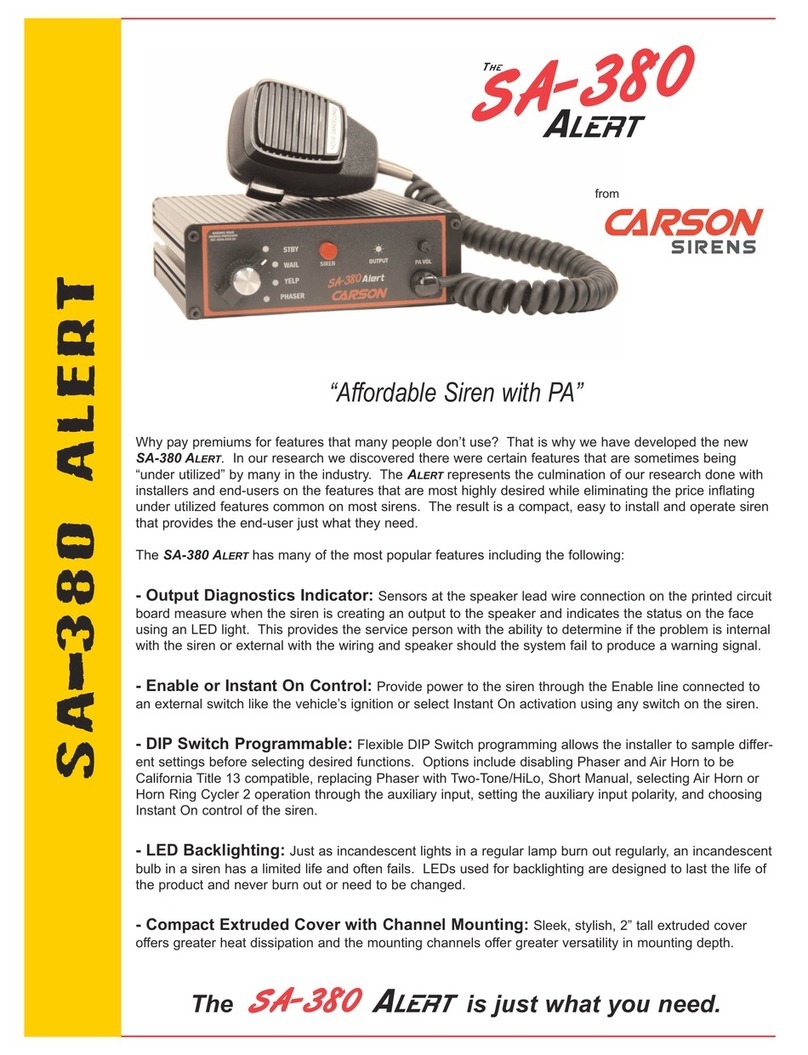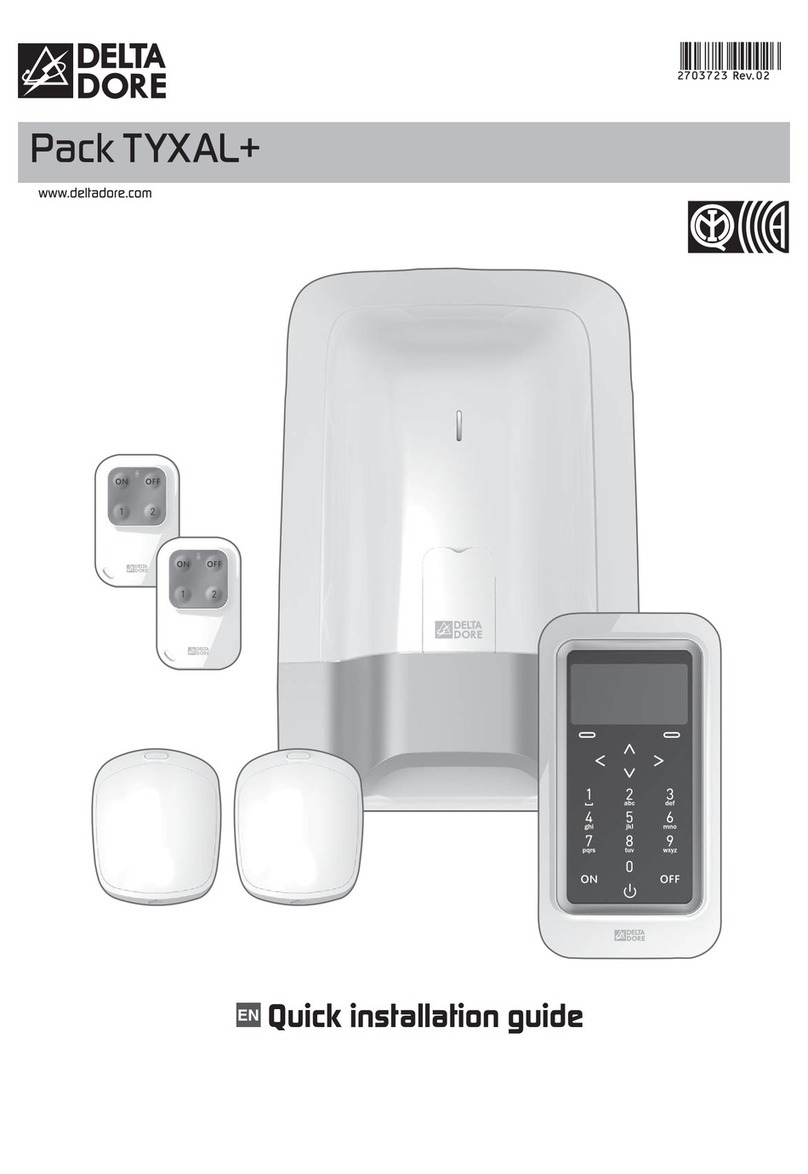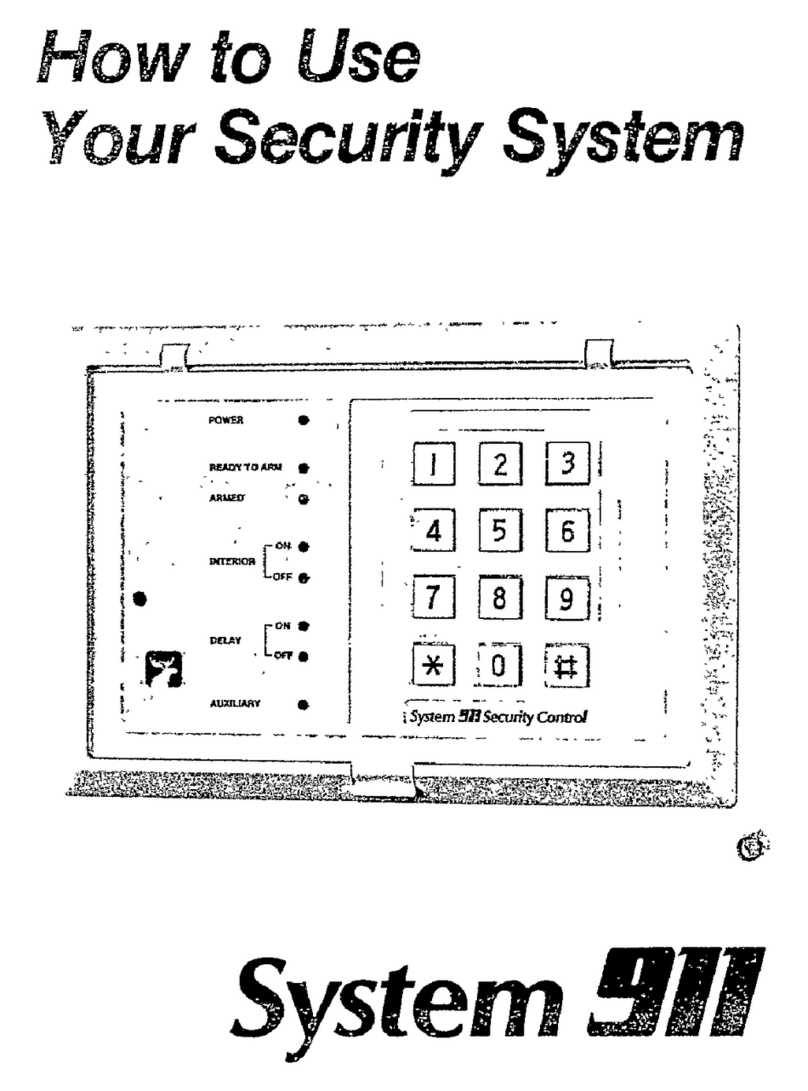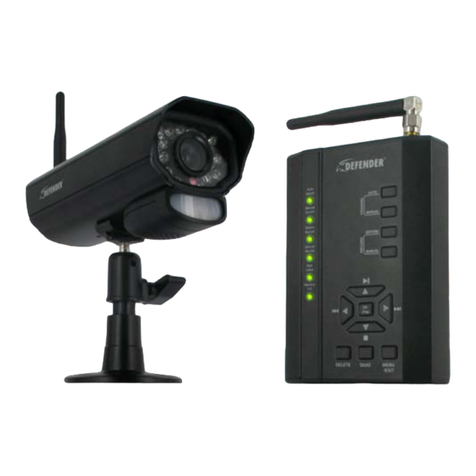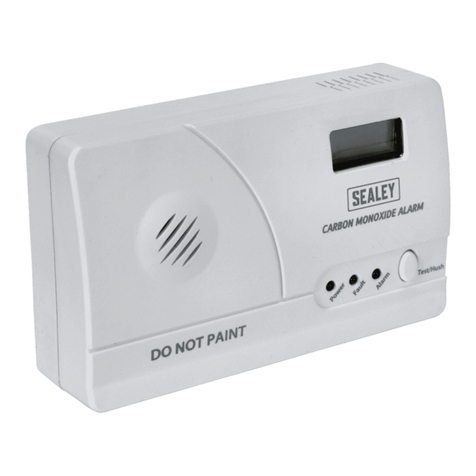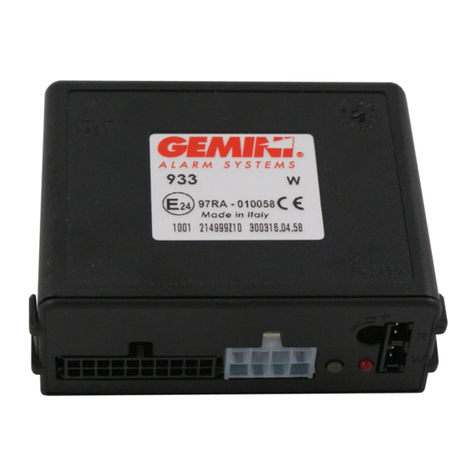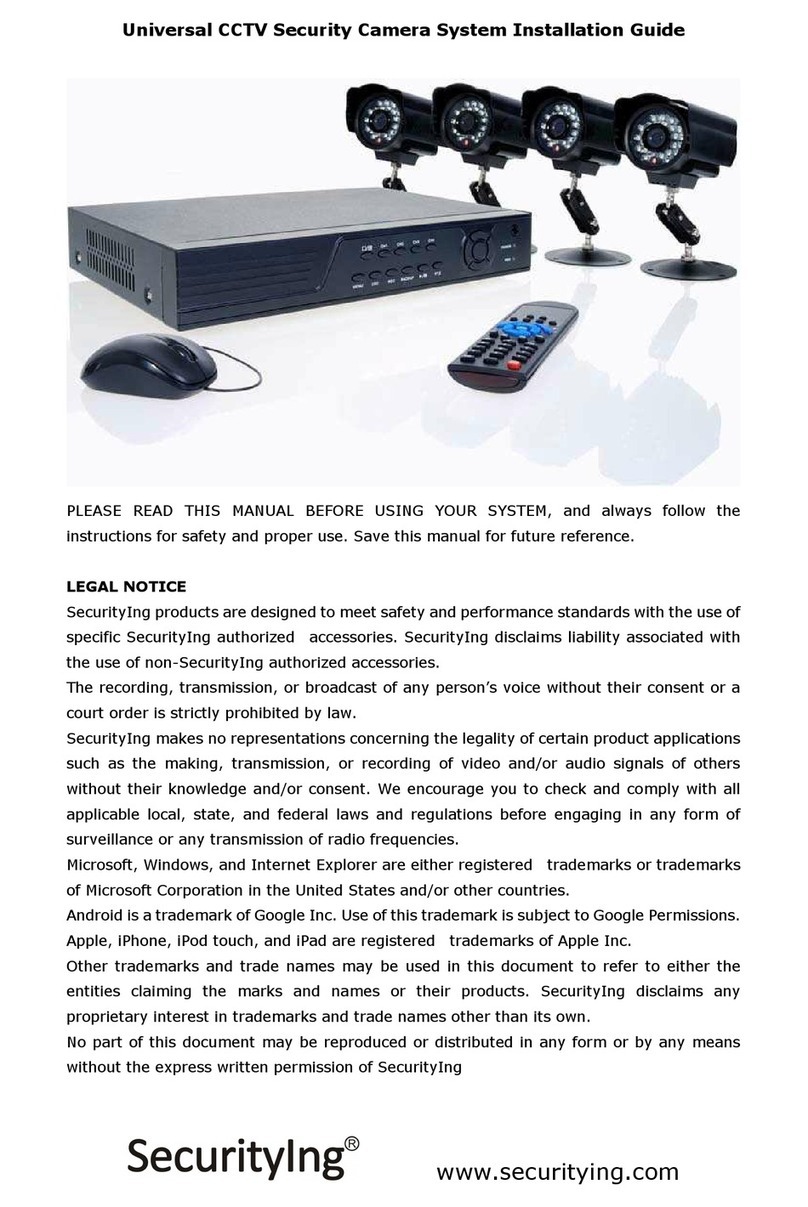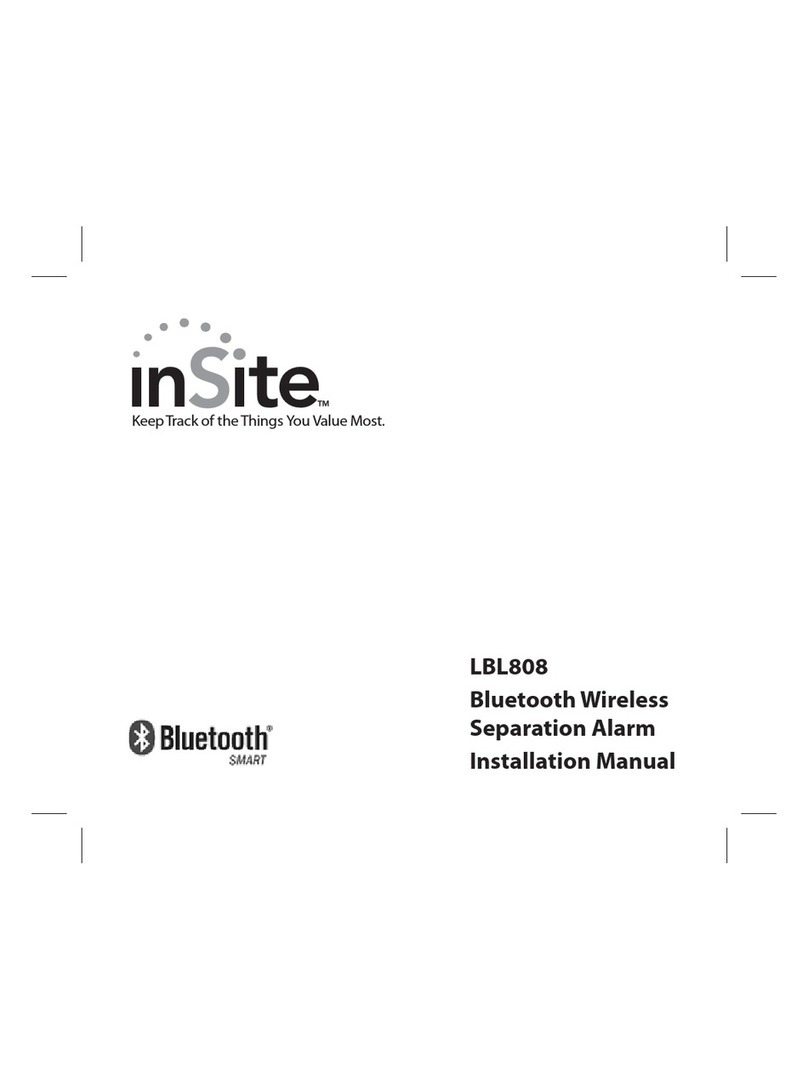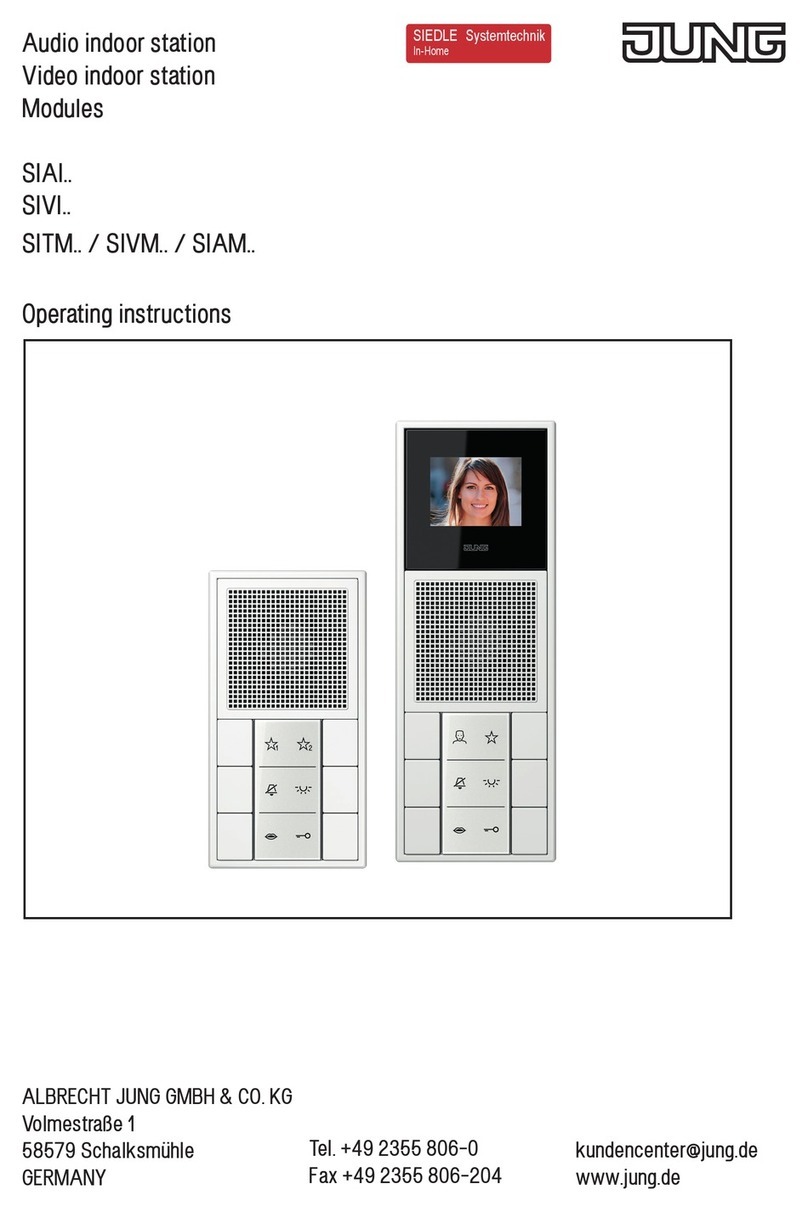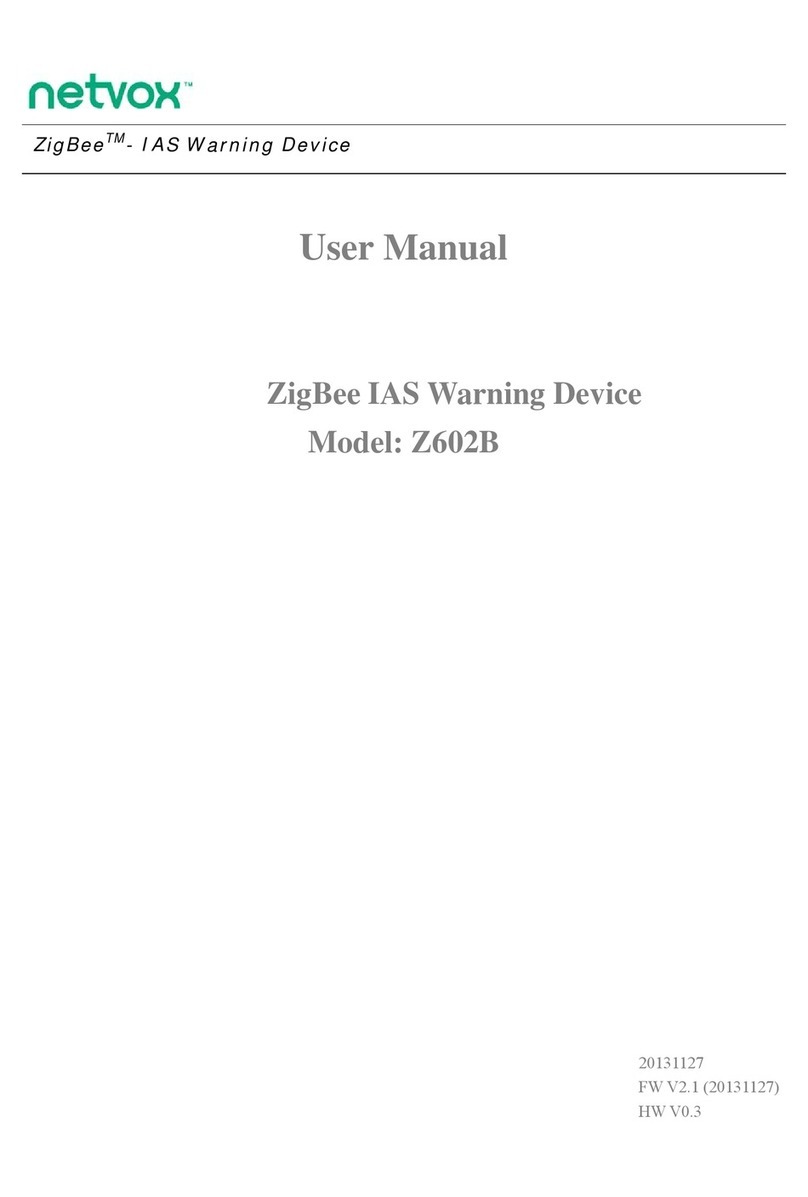Snoos FLOOD User manual

Please note: The product label must not be
removed as it contains important information
regarding the product.
All alarms
that need to be connected in the
house should be put into ‘Learn Mode’ by sliding
the switch on the top of the alarm to the ‘Learn
mode’ position.
The red LED will light up to indicate that ‘Learn
Mode’ has been selected.
Do not take out the battery during ‘Learn Mode’ as
this will interrupt the learn process.
Press and hold the test button at one alarm only,
until it beeps and the LED fashes. This alarm will
become the master and will start sending out a
specific house code to the other alarms.
As the other alarms receive the specifc house
code, they will also fash the LED light.
When all alarms flash the red LED, they are
connected and can be switched out of ‘Learn
Mode’ and installed.
4. Switch out of ‘Learn Mode’ by sliding the switch
on the top of the alarm to the ‘Normal mode’ position.
Commercial reference: 5101-003
Developed by CAVIUS
PLEASE READ THE USER GUIDE
CAREFULLY BEFORE USE AND
RETAIN FOR FUTURE USE!
The Flood Alarm is designed to detect a leak of
water from washing machines, water pipes or
under-sink cabinets. It can also be used to detect
flooded basements.
TECHNICAL INFORMATION:
The maximum number of alarms that can be
interlinked within a house group is 32.
Please note:
The distance between interlinked alarms
depends on the house layout and they should
always be tested after installation.
It is not advised to get more than 10m distance
between two alarms.
Diameter: 60mm. Height: 37mm.
The alarm is powered by a replaceable 3v CR123A
lithium battery. Please note that correct operation of
the flood alarm device is ensured by use of one of
the following batteries: DURACELL, PANASONIC or
HUIDERUI.
Interlinked by RF: 868 MHz.
Complies to standards: RoHS, REACH, R&TTE
(EN300-220-1 and 2), EMC directive 2004/108/EC.
1. HOW TO SET UP AND CONNECT ALARMS:
1. Open the flood alarm top
cover by twisting counter
clockwise.
2. Remove the Test button / Lid
to access the battery and
the RF learn slide switch.
3. Start by pulling out the battery isolation strip as
shown.
UK
SENSOR
PINS
ISOLATION
STRIP
DO NOT
REMOVE THE
PRODUCT LABEL
5. Remount the Test
button / Lid.
6. Close the flood alarm
top cover by twisting
clockwise.
2. THE BEST AREAS TO INSTALL THE
FLOOD ALARM:
• Install a flood alarm where it is hard to discover
possible leaks.
• Install next to washing machine, dishwasher,
under-sink cabinet or in the cellar.
• Install in basements.
Place the alarm where it is reachable in order
to test the battery.
3. AREAS WHERE NOT TO INSTALL FLOOD
ALARMS:
• On the ceiling.
• On the wall (unless using accessory wall
mounting base, see section 5).
• In rooms where temperature goes outside
0°C to 40°C.
Place the alarm where it is reachable in order
to test the battery.
4. PLACEMENT:
The flood alarm is designed to be placed on the
floor near to possible leaks.
NOTE:
If you place the flood alarm in places
where a potential water leak / flood can rise higher
than 2cm, there is a risk of your flood alarm being
damaged. In these places we recommend a wall
mounting base with probe.
NORMAL MODE
1
2
Minimum flood alarms Minimum smoke alarms
Minimum heat alarms
1
NORMAL MODE
2
LEARN MODE
SOUND
®
snoos house alarm

The system can consist of a combination of smoke,
heat, flood etc.
Place all alarms into ‘Learn Mode’ and repeat section 1.
Always test connection to all devices by repeating
test function (section 6) after adding devices.
11. LOW BATTERY SIGNAL:
Your product has a 5Y battery life.
When the battery is starting its end of life, a short
beep will sound out every 48 seconds for 30 days.
The alarm effected by the low battery will only beep,
no other connected alarms will sound.
It is safe to change batteries in the alarms without
going through the learn process again – they will
not forget the codes during the battery change
process.
12.
BATTERY REPLACEMENT:
To replace the battery, detach the cover of the food
alarmby twisting counterclockwise.
Replace the battery respecting the polarities.
Put the test button back, close the casing by
twisting it clockwise, and test the alarm.
13. TROUBLE SHOOTING:
In case of bad or weak signal, change the location
of the flood alarm.
If the flood alarm does not work when the test
button is pushed or tested on a damp cloth, the
probable cause is a faulty battery. Check if the
battery is worn out or wet and replace it.
Always test the alarm after replacement of
battery.
If the problem continues, please visit
www.snoos.com for any trouble shooting.
14. OTHER INFORMATION:
Do not paint the alarm.
Note the local country regulations regarding
installation.
Disposal: For battery and product, please dispose
properly at the end of life. This is electronic waste
which should be recycled.
The CE mark affxed to this product confirms its com-
pliance with the European Directives which apply to
the product.
the hardware, software, and/or specifcations detailed
herein at any time without notice, and Snoos A/S does
not make any commitment to update the information con-
tained herein. All the trademarks listed herein are owned
by their respective owners.
Copyright © SNOOS A/S and CAVIUS ApS
.
5. ACCESSORY WALL MOUNTING BASE WITH
PROBE:
NOTE:
The wall mounting base with probe is an
accessory option for the flood alarm. It must be
purchased separately.
For installation in basements with risk of flooding
or areas with diffcult accessibility.
Installation with screws and plugs:
Place the flood alarm base on the wall and the
probe on the floor.
Make sure that the probe reaches required level
either to the ground or down the drain.
Installation with adhesive tape:
1. Choose a suitable spot. Make sure that the
mounting area is stable, dry and free of dust and
grease. Check that the surface is flat. Once
assembled the Mounting base cannot be removed
or repositioned.
2. Attach the alarm into the socket. Make sure that
the alarm has been f tted into the socket properly be-
fore you start sticking it to the wall.
3. Remove the protective Foil from the adhesive tape.
4. Mount the socket with the attached alarm to the
wall by applying light pressure.
5. Test the alarm according to the users guide of your
alarm.
Note: When attached or detaching the alarm from
the socket always make sure to secure the socket by
holding onto the socket.
6.
TEST FUNCTION:
After installation, and at least once per quarter,
test all of your alarms to ensure they are
operating correctly and are within range of
each other.
It is recommended to check visually every week if
the LED flashes correctly (every 48sec.).
Press the test button on any alarm for 2 sweeps of
alarm signal 1 (--- --- ---) - Please refer to section 8.
This will send out a test signal from the alarm; all other
connected alarms should receive the signal within a
short time. The alarms will emit a short beep and the
LED will flash every 8 seconds for 2 minutes.
NOTE: Test function also allows to send a depleted
RF signal to ensure an optimal operation in normal
conditions.
When the test signal is sent out, the alarms will
respond by:
A single beep every 8 seconds to indicate that the
alarms are connected and functioning.
If required this indication can be stopped early on
each alarm by a short press of the test button
TIP:
It is safe to cover the sound output hole with
your finger during the testing to minimize the
sound level emitted.
Test of the water leak function:
To test the water leak function, place the flood
alarm on a wet cloth and it should go into alarm.
7.
NORMAL MODE:
In normal mode the LED will flash every 48 seconds
to show correct operation.
8.
ALARM MODE:
Flood alarm condition is indicated by a series of
repeated tones.
The flood alarm will also transmit the alarm signal to
the other connected alarms, which will also sound
the alarm signal after a short delay.
The Family have two different alarm signals:
Alarm signal 1 (--- --- ---) is life threatening
alarms, like a smoke alarm.
Alarm signal 2
(- - -) is a non life threatening
alarm, like a flooding alarm.
Smoke alarm signal: --- --- ---
Heat alarm signal: --- --- ---
Flood alarm signal: - - -
Please note that only the originating alarm’s LED
will flash, so it can be identifed.
9.
PAUSE/HUSH FUNCTION:
Flood alarm can be paused for 10 minutes by
pressing the test button on the originating alarm
only (indicated by the fashing LED, and after 10
minutes goes back to normal function).
The reason that you can not pause the other alarms,
only the originating alarm, is for your own safety. It is
necessary to locate the source of the alarm to make
sure that it is not a situation that needs your attention.
10. ADD EXTRA DEVICE:
Developed by CAVIUS Aps Julsøvej 16, DK-8600
Manufactured in P.R.C.
Turn the alarm until it clicks all the
way in and can’t be turned - then
it is correct positioned.
126849 rev1
USE THE
ENCLOSED
SCREWS AND
PLUGS
HEAT ALARM
FLOOD ALARM
SMOKE ALARM All Rights reserved: SNOOS A/S and CAVIUS ApS
assumes no responsibility for any errors, which
may appear in this manual. Furthermore, SNOOS A/S and
CAVIUS ApS reserves the right to alter
®
snoos house alarm
Other Snoos Security System manuals
